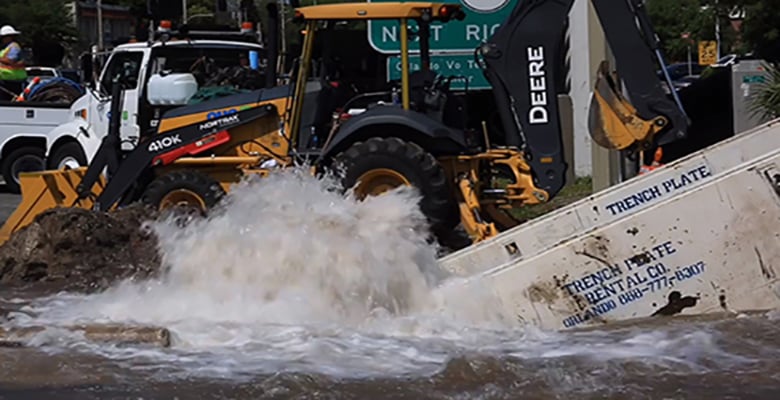In 2017, Orlando residents saw firsthand the negative effects of what could happen when a construction crew caused a major water main break downtown. Not only did the leak become an inconvenience for the city, but it also was expensive to repair.
That’s why the Orlando Utilities Commission (OUC), hoping to stop another major water main break, implemented an acoustic leak detection system to proactively find leaks during construction along a 21-mile stretch of the I-4 expressway, a major thoroughfare in the city.
Cierra Putman, a reporter WFTV Channel 9 in Orlando, recently did a story interviewing OUC spokesperson Tim Trudell.
(0:01) WFTV Anchor Greg Warmoth: It is a pilot project, inspired by last April’s major water main break in downtown Orlando. You remember this mess? That was the scene last year on Garland Avenue near busy Colonial Drive. Channel 9’s Cierra Putman learned the commission installed underground sensors to detect leaks, and Cierra, these sensors are only going in along I-4 Ultimate Project construction sites for now.
(0:22) WFTV Reporter Cierra Putman: And there’s going to be a total of 56 sensors along the I-4 construction project, and their goal is to detect any leaks caused by construction workers. Remember this? Thousands of gallons of water pumping onto Orlando city streets after an I-4 Ultimate Project contractor broke a water main. That break was a wake-up call for OUC. As a result, it decided to install these underground sensors from Parr Street to Kirkman to protect pipes.
(0:54) OUC Spokesperson Tim Trudell: You may see a smaller, sometimes these leaks happen, they’re very small, and over time they escalate and become huge.
(1:00) Cierra: A crew just snakes the sensor down the water valve like this. A magnet attaches the sensor to the pipe below and the sound wave technology can tell the difference between construction noise and running water so it can focus on the sound of a leak. So each sensor is about three to five feet underground, but you have to go up about 20 to 25 feet to see the DCU receiver that collects all of this information. There are 12 receivers for the 56 sensors.
(1:30) Tim: Alerts the crew, crews can respond right away.
(1:33) Cierra: OUC spokesman Tim Trudell says it cost $250,000. If someone looks at their bill, are they going to see it going up because of this?
(1:40) Tim: No.
(1:41) Cierra: OUC thinks the system will save money by catching small problems before they become big expensive ones.
(1:47) Tim: We’ve already detected one leak; if we detect another one this project has certainly paid for itself.
(1:55) Cierra: And again, this is a pilot program. Right now the plan is to only have these sensors in the area along I-4 and all that construction work. Reporting live in Orlando, Cierra Putman, Channel Nine, eyewitness news.
The Orlando Utilities Commission is just one example of how implementing the ZoneScan System is helping to prevent major consequences from water leaks. The ZoneScan system works to detect potential leaks within feet to stop them before they become both an expensive and time-consuming problem.

